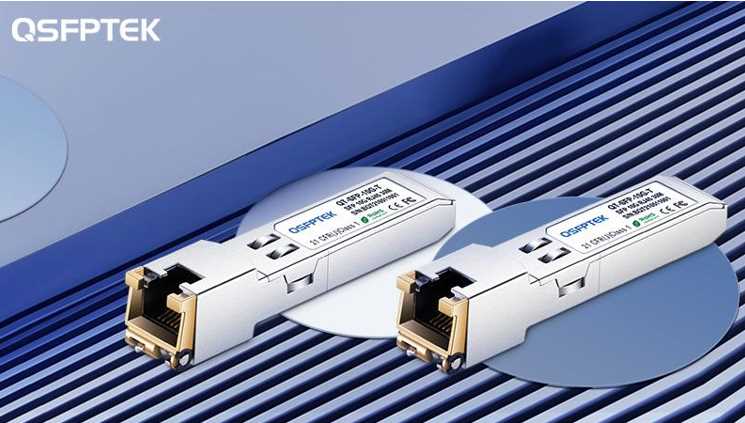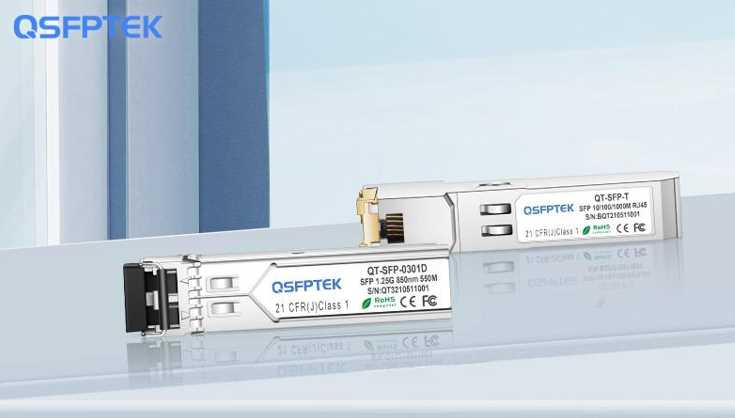With the demand for IP-based data processing in data centers, 10GBASE-T modules are increasingly deployed in data centers and enterprise-level servers. 10GBASE-T modules can bring high-quality and cost-effective copper wire transmission, So do you know how 10GBASE-T works, do you know what technology it uses?
How Does 10BASE-T Come About?
In June 2002, IEEE released the first 10G Ethernet standard 802.3ae based on optical fiber transmission, and its transmission distance is between 300m and 40km. Expanded the use of Ethernet technology. In November 2002, two organizations were established to study the transmission of 10Gbit/s data over copper cables: one was 10GBASE-CX4 to study methods to achieve 10Gbit/s over 4-pair coaxial copper cables, and the other was to study 10GBASE-T 10Gbit/s is achieved on cat5e and cat6 twisted pairs.
In January 2004, IEEE passed the IEEE 802.3ak standard for transmitting 10Gbit/s on coaxial copper cables, with a maximum transmission distance of 15m, which is suitable for the connection of server backplanes in data centers; in June 2006, based on 4 pairs of The 10Gbit/s standard for shielded twisted pair transmission – IEEE802.3an has been officially adopted, with a transmission distance of 100m, which is suitable for network backbone networks and data centers.
What Technologies Does 10BASE-T Have?
Full-Duplex Mode
10GBASE-T only supports full-duplex transmission mode. In the IEEE802.3 standard, the half-duplex bus mode is adopted, and the transmission mechanism of CSMA/CD is used for data transmission. Meanwhile, only one signal is transmitted in the line. When there is a transmission conflict, the transmission will be interrupted. It has the characteristics of simple principles and easy implementation in technology.
However, with the increase of network users and network traffic, this transmission mode obviously cannot meet people’s requirements for high network efficiency and low latency. For the first time in the 10 Gigabit Ethernet standard 802.3ae, it is stipulated that data transmission is only carried out in full-duplex mode. In full-duplex mode, the transceiver is relatively independent, and there is no obvious obstacle between the two, eliminating the need for carrier detection. The delay improves the timeliness of transmission to a certain extent.
128DSQ+LDPC
In order for PAM16 to carry out efficient data transmission, it is necessary to channel code the PAM16 symbols. The 128DSQ (128-point double-matrix) coding technology is used in 10GBASE-T. In two consecutive PAM16 symbols to form a 16×16 two-dimensional matrix, 128 points are selected to form two matrices for signal coding, so that The distance between adjacent symbols can be expanded by 1.414 times. The expansion of the distance between adjacent symbols is beneficial to reduce the crosstalk between symbols. This coding method can improve the signal-to-noise ratio by about 3dB.
In order to further reduce the error rate of transmitted data, LDPC (Low Density Parity Check Code) is added on the basis of 128DSQ channel coding. LDPC is a linear block code with excellent error correction performance and practical value. It has the characteristics of approaching the Shannon limit and easy implementation of software and hardware. The addition of LDPC reduces the error rate of data transmission to 10-12, which greatly improves the effectiveness of data transmission.
Conclusion
As the first choice for short-distance transmission in many data centers, 10GBASE-T copper modules have been widely deployed in the current 10G Ethernet due to their excellent cost performance, backward compatibility, and flexibility in setting up cabling systems. If you have any questions about 10GBASE-T, you can consult the QSFPTEK official website via [email protected]. QSFPTEK is a company specializing in the production of a series of related products such as optical modules. Its technical team can provide you with professional 10GBASE-T solutions.

